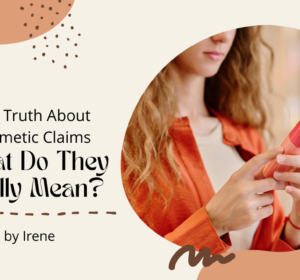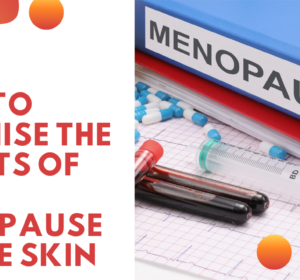The ingredients used in cosmetics go through an exhaustive control process to ensure they are not harmful. However, a lot of the cosmetics we buy nowadays use words such as “Parabens free”, “Mineral Oils Free”, “Silicones Free”, etc.
Why do brands use this type of claim? Are these types of ingredients a real danger or a commercial trick?
Let’s see which ingredients are the most polemic in cosmetics and if they are a real danger for our health.
Alcohols and Silicones
Products known as alcohols in cosmetics are not real alcohols from the chemical point of view as ethanol, isopropanol or alcohol denat can be. Alcohol in this context means esters of fatty acids and that is why I am going to write them between quotation marks (don’t forget I am a chemist).
These “alcohols” are emulsifiers and emollients. The most common “alcohols” are cetyl alcohol, Cetearyl alcohol, and Ceteareth-20. They act as emulsifiers in cream helping to solve oil ingredients in water or vice versa.
They are not harmful to the skin but it is better to avoid them as they can dry the skin.
Silicones are silicon chemical element derivatives compounds used in cosmetics mainly in hair products and makeups. They appear in the INCI as dimethicone, Cyclomethicone, and, in general, any compound ending in -siloxane.
Silicones keep skin and hair hydrated and make them look shiny. The problem is that when doing that, they clog the pores in the skin and make the hair heavy.
They don’t cause any disease as such but can harm acne-prone skins as silicones are comedogenic.
 |
| Ceterayl alcohol |
Aluminium Salts and Titanium Dioxide
Aluminium Salts are common ingredients in deodorants and antiperspirants. Aluminium salts work blocking sweat ducts to reduce sweating. This blockage of sweat ducts can prevent the toxins’ elimination and their accumulation in the lymph nodes.
Aluminium salts are thought to be associated, due to this reason, with breast or armpit cancer thought it was proved that there was no report on these types of cancer and aluminium salts. The reason is that breast or armpit cancers do not start in the lymph nodes.
Despite there is no clear link between cancer and aluminium deodorants, some manufacturers prefer to avoid it and use other types of ingredients instead as talcum powder and starch.
Titanium dioxide is a natural mineral used in cosmetics to increase the opacity of powders and to give them a whitish hue. It can also be used in physical barrier sunscreens as it reflects sunlight.
There is a debate about if titanium dioxide is carcinogenic by inhalation or by penetration through the skin. There is no evidence of that. However, there is also no evidence that they are not carcinogenic.
 |
| Titanium dioxide |
Mineral Oils
Mineral oils can appear in the INCI under different names: mineral oil, paraffin, petroleum, or petroleum derivatives.
They are present in baby oils, lipsticks, mascaras, moisturisers, eyeshadows, hair conditioners, among others.
They are added to the products to keep skin hydrated. Mineral oils create a film on the skin to avoid hydration loss, but at the same time, they cover the pores and don’t allow skin breathing. Because of that, they increase the speed of the ageing process and produce irritation on the skin. They are comedogenic.
However, some areas, such as the lips, are not susceptible to suffering from comedogenicity. It is pretty safe to use mineral oils in those areas.
 |
| This product is 100% mineral oils |
Parabens
Parabens are a man-made family of compounds used in cosmetics as preservatives. The most common parabens you can find in your cosmetics are methylparaben, ethylparaben, propylparaben, butylparaben, and isobutyl paraben. Most cosmetics contain parabens in their formula as they avoid bacterial and fungal growth.
Parabens have been related to breast cancer and reproductive problems in males. However, there is no scientific evidence of that. Some breast tumours indeed showed the presence of parabens, but they are a different type than the parabens used in cosmetics.
 |
| Example of parabens in the INCI |
Phthalates
Phthalates are very common in nail polishes, hair sprays and synthetic fragrances. Phthalates are added to the cosmetics to help them to stay in the skin for longer.
Phthalates may have an influence on the endocrine system, upsetting the hormonal balance. They have also been related to kidney, lung and liver problems. At the moment, there is no evidence of that in any way.
 |
| General formula of phtalates |
Sulfates
Sulfates are the main ingredient in most cleaning products, such as shampoos, shower gels, faces washes, etc.
Sulfates are foaming agents but they are very aggressive. They can irritate the skin and produce eye damage if the product contacts the eyes.
The most common sulfates are Sodium Lauryl Sulfate (SLS) and Sodium Laureth Sulfate (SLES).
Shampoos containing sulfates can produce hair dryness and eliminate any product or treatment from the hair such as hair dye, keratin or any other treatment you apply.
They are not harmful to health, but as they are aggressive and dry hair and skin, I prefer to avoid them.
 |
| General formula of sulfates used in cosmetics |
Formaldehyde
Formaldehyde can appear in the INCI under different names (rarely it appears under formaldehyde): quaternium-15, DMDM Hydantoin, imidazolidinyl urea, 2-bromo-2-nitropropane-1, 3-diol (bronopol), glyoxal, oxaldehyde, sodium hydroxymethyl glycerol.
Formaldehyde is used as a preservative to increase the product’s shelf life but also can be used as the main ingredient in products such as nail hardeners and Brazilian blow-out treatments.
Formaldehyde is one of the ingredients to avoid as it is classified as Class I carcinogenic by the World Health Organization (WHO).
Formaldehyde is linked to lung cancer, leukaemia and other serious diseases. It goes into the organ by inhalation (it is volatile) and can irritate eyes, nose, and throat, and produce different types of damages.
Japan and Sweden have banned this ingredient a few years ago (read this article to know more).
 |
| Formaldehyde |
This is a small list of polemic ingredients used in cosmetics. Most of them do not produce real damage or there is no evidence of that. However, they produce dryness or other negative effects on the skin.
I try to avoid them, not because they are harmful, but because my skin is very dry and I try to avoid anything that can dry out more or upset it.
There are a long number of ingredients which can be really avoided. Let me know in the comments if you want to know about them.
Bear in mind that some of the links in this post are affiliate links and if you go through them to make a purchase I will earn a commission. Keep in mind that I link these companies and their products because of their quality and not because of the commission I receive from your purchases. The decision is yours, and whether or not you decide to buy something is completely up to you.




